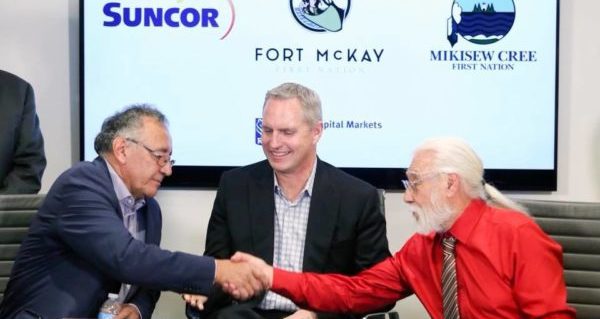 One of the greatest Indigenous success stories is the Fort McKay First Nation, in the heart of the oilsands country. It has never produced a drop of oil or earned a dollar in royalties, but it has achieved a standard of living comparable to other Canadian communities by selling services to oilsands companies – janitorial care, earth-moving, trucking and workforce lodging, to name a few.
One of the greatest Indigenous success stories is the Fort McKay First Nation, in the heart of the oilsands country. It has never produced a drop of oil or earned a dollar in royalties, but it has achieved a standard of living comparable to other Canadian communities by selling services to oilsands companies – janitorial care, earth-moving, trucking and workforce lodging, to name a few.
Now, only about five per cent of its income comes from government transfers – the other 95 per cent stems from business ventures.
Like the rest of Alberta, Fort McKay was rocked by the drop in oil prices from a high of US$109.89 per barrel (West Texas Intermediate) in June 2014 to US$29.67 in January 2016. After years of running a healthy surplus, Fort McKay’s revenue plunged by 37 per cent in one year and the budget went into the red. But the deficit lasted only one year.
Fort McKay reduced discretionary spending, liquidated unprofitable investments and reoriented its business strategy toward income stability. Soon, it was back in the black.
Compare this to what has happened in Alberta more broadly.
Under the Progressive Conservative governments of Ed Stelmach and Alison Redford, the province ran large deficits from 2008 onward, even though oil prices averaged about US$90 a barrel in that period. Alberta was by far the wealthiest and most prosperous province in Canada, yet the government could not live within its means. It used up the ‘rainy day’ fund established in Ralph Klein’s administration, squandering the surplus that might have cushioned the province against the fiscal shock of 2015.
Then, instead of adjusting to the new and less favourable environment, the NDP government led by Premier Rachel Notley drove spending even higher while continuing to borrow more than $10 billion a year. Alberta’s government is now deeply in debt with no realistic plan for getting back to budget balance.
Alberta politicians of all parties, instead of sitting in Edmonton, should take a trip to Fort McKay to learn the simple but profound lessons of good fiscal management. Run a surplus when times are good. Don’t build up spending commitments that are unsustainable in less prosperous times. React quickly when things do go south (as they always do, sooner or later). Cut discretionary spending to restore a balanced budget within a reasonable time. Above all, don’t start borrowing to fund ongoing operating expenses – it only postpones the day of reckoning and makes it more painful when it comes.
A huge dose of humility is in order for Alberta’s politicians. For the last 10 years, their fiscal management has been outclassed by a small, remote First Nation whose people a generation ago were hunters and trappers in the wilderness.
And it’s not just the politicians – the people of Alberta should learn these lessons. Late former premier Jim Prentice was right when he said that if you want to understand Alberta’s fiscal problems, “look in the mirror.” That he lost the 2015 election only shows how right he was. (Prentice was, by the way, a great friend of Fort McKay.)
Like Alberta, Fort McKay has an elected government. Its leaders have exercised prudent management only because its voters have supported fiscal discipline.
Where were Alberta’s voters when the provincial government was – and still is – recklessly piling up debt? Why have they voted for parties that tried to escape from fiscal challenges by borrowing money?
Look in the mirror to see what went wrong. And look at Fort McKay to see how to set things right.
Tom Flanagan is professor emeritus of political science at the University of Calgary, senior fellow at the Fraser Institute and author of a new Fraser Institute study on the Fort McKay First Nation.
The views, opinions and positions expressed by columnists and contributors are the author’s alone. They do not inherently or expressly reflect the views, opinions and/or positions of our publication.

